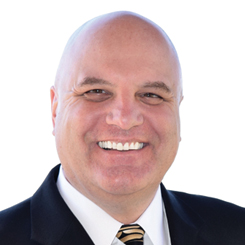Risk Adviser
Answer the Call
With human trafficking becoming a growing exposure, insurers need to create coverage for their clients.
Every year emerging risks are faced by clients, brokers and carriers.
One of these emerging perils is human trafficking. It is one of the most heinous and more publicized risks that increase each year, not only in the U.S. but globally as well.
The National Human Trafficking Resource Center defines human trafficking as ... “a form of modern day slavery ... when a trafficker uses force, fraud or coercion to control another person for the purpose of engaging in commercial sex acts or soliciting labor or services against his/her will.”
In the area of sex trafficking, there have been several court cases where insureds, primarily in the hospitality sector, have sought coverage from their carriers under their general and executive insurance policies.
In the majority of these cases the victims of human sex trafficking have brought litigation against the hotel owners alleging that the hotel had a duty of foreseeability and training but failed to act. The hospitality owners sought coverage under their policies.
Insurance carriers have successfully defended their policies by citing policy exclusions that the human sex trafficking conduct fell under the exclusion for assault and battery. Most state courts have affirmed this exclusion and have also cited the defense of public policy by “hotels profiting from the human trafficking…” in certain states. A recent Massachusetts case is under review.
These exclusions while legally upheld do create a vacuum for client coverage and defense.
Clients are facing this reality of no coverage for human trafficking litigation against them. The hospitality, health spa, transportation and entertainment industries have stepped up their risk management and prevention efforts to train employees, vendors and customers.
One major global hotel chain has trained over 300,000 of its employees on human trafficking identification and reporting protocols. Major domestic and international corporations are publicly stating what their companies are doing to combat human slavery and trafficking in their annual reports and in press releases.
What makes the task of educating, training and responding especially daunting for companies is that plaintiff attorneys are using the internet to locate potential victims and targeting hotels, truck stops, airports, restaurants and social media companies.
Human trafficking is not just about the sex trade but also labor trafficking. Forced labor is part of the supply chain for goods and services.
The U.S. Department of Labor reports that the most common industries with human trafficked forced labor are agriculture, manufacturing and mining. Other industries include, health care, nursing homes, restaurants and construction. An estimated 57,000 employees are victims of forced labor in the United States.
There are more than 30 states that require employers to conduct some form of training on human trafficking. With this growing exposure, could insurance carriers create a policy for human trafficking defense? A policy which may include endorsements, sub-limits, part of excess crisis response, or stand-alone coverage?
Areas of underwriting, risk exposure, premium pricing, claims and concentration exposure would all be factors to consider in human trafficking coverage or policy.
Human trafficking is becoming an epidemic and the United States is the leading country for this horrific trade. For centuries the insurance industry has responded when difficult and challenging coverage was needed.
This may be the year to answer the call.

Best’s Review columnist Lance Ewing is executive vice president of Global Risk Management for Cotton Holdings Inc. He also is the former president of the Risk and Insurance Management Society. He can be reached at bestreviewcomment@ambest.com.



























